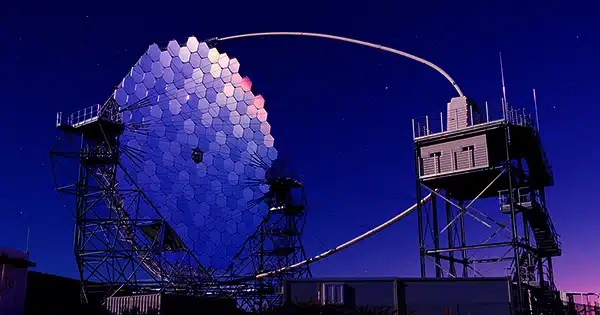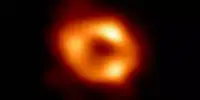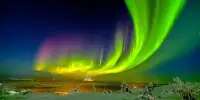Dark matter, or anything in the universe that does not emit, absorb, or reflect light, cannot be detected directly with traditional telescopes or other imaging devices. For decades, astronomers have been attempting to develop alternate methods for detecting dark matter.
Tsinghua University, the Purple Mountain Observatory, and Peking University recently conducted a study to investigate the feasibility of directly detecting dark photons, which are prominent dark matter candidates, using radio telescopes. Their work, which was published in Physical Review Letters, may help future searches for dark photons, which are hypothetical particles that would convey a force in dark matter in the same way that photons transport electromagnetism in normal matter.
“Our previous work studied the conversion of dark photons into photons in the solar corona,” Haipeng An, one of the researchers who carried out the study, told Phys.org.
“This process involves the excitation of free electrons by dark photon fields, leading to the emission of normal photons. Building on this work, Jia and I considered using the free electrons in a dished telescope to induce electromagnetic signals and then using the FAST telescope to search for search such a signal.”

Soon after, they began investigating the use of dish telescopes to search for dark photon-related electromagnetic signals. An and his colleagues realized that, due to the non-relativistic nature of dark matter, the reflector in such telescopes would need to be spherical, with the signal receiver placed in the center of this sphere.
Existing dished radio telescopes, such as China’s five-hundred-meter aperture spherical radio telescope (FAST), are built to observe faraway radio transmissions, hence their dish shape is parabolic, with the receiver situated at the point of focus. This meant that dark photon-induced electromagnetic signals would not concentrate at their receiver.
“After this realization, we temporarily gave up on this idea,” An explained. “I was invited to give lectures about dark matter at the UFITS summer school for cosmology held at the FAST site in the summer of 2021, where I studied the details of how the FAST telescope works.” I discovered that the receiver positioned above the dish could move around, allowing the telescope to observe radio waves from various orientations. Although the dark photon dark matter-induced EM waves are not focused on the receiver, the EM field can form a distribution on top of the dish, which can be correctly estimated theoretically.”
An’s later theoretical predictions state that the moveable receiver in radio telescopes should be able to capture electromagnetic signals from various locations. The signals recorded by the receiver may then be compared to theoretical distributions, which would aid in improving telescope sensitivity to dark photon-induced signals.
“With our colleagues, we then started to calculate this signal,” An explained. “We discovered, to our surprise, that even without considering the distribution, with the extraordinary sensitivity, even though the dark photon dark matter induced signal is not focused at the receiver, the sensitivity of the FAST telescope has already surpassed the CMB constraint, which means that the FAST telescope can discover the dark matter if the dark matter is composed of dark photon and is in the right mass region.”
An and his colleagues also evaluated observation data generated by the FAST radio telescope, which is located in a town in the mountains of China’s Guizhou area, to further assess the plausibility of their proposed strategy for searching for dark photons. Prof. Xiaoyuan Huang, who is also a co-author of the latest research, contributed these data.
“We analyzed the data and placed the most stringent bound on the model in the 1-1.5 GHz frequency range,” An explained. “We realized that dark photon dark matter could induce electric signals on dipole antennas and that, because it is non-relativistic, we could use interferometry technology to improve sensitivity.” “We calculated the potential sensitivity of the LOFAR telescope and the future SKA telescope and discovered that both have the potential to discover dark photon dark matter.”
Overall, the findings of this team of experts indicate that radio telescopes may be able to detect dark photons directly. Their findings could widen the search for dark photons, particularly ultra-light dark photons.
“In the early 1960s, while conducting research in radio astronomy, Penzias and Wilson stumbled upon an unexpected low-level background noise,” An explained. “This noise was later confirmed to be cosmic microwave background radiation, providing important evidence for the universe’s hot early expansion.” Through kinetic mixing with photons, ultra-light dark photons exhibit photon-like electromagnetic interactions. Ultra-light dark photons can behave similarly to cosmic microwave background radiation as a possibility for diffuse dark matter in the universe. Enigmatic murmurs from the dark realm can be detected by attentively listening with contemporary radio telescopes.”
This study team demonstrated that ultralight dark photons can behave similarly to dark electromagnetic fields at specific frequencies, and that they could potentially be discovered using radio telescopes, which are routinely used to observe the cosmic microwave background. Their theoretical concerns may one day inform searches for dark photon dark matter that rely on large-scale radio telescope data.
“Our work could pave the way for a new subfield of radio astronomy,” An added. “We now intend to look for dark photon dark matter signals in LOFAR and MeerKAT data.” We also intend to use this concept to look for axion dark matter, another viable lightweight dark matter candidate.”
















